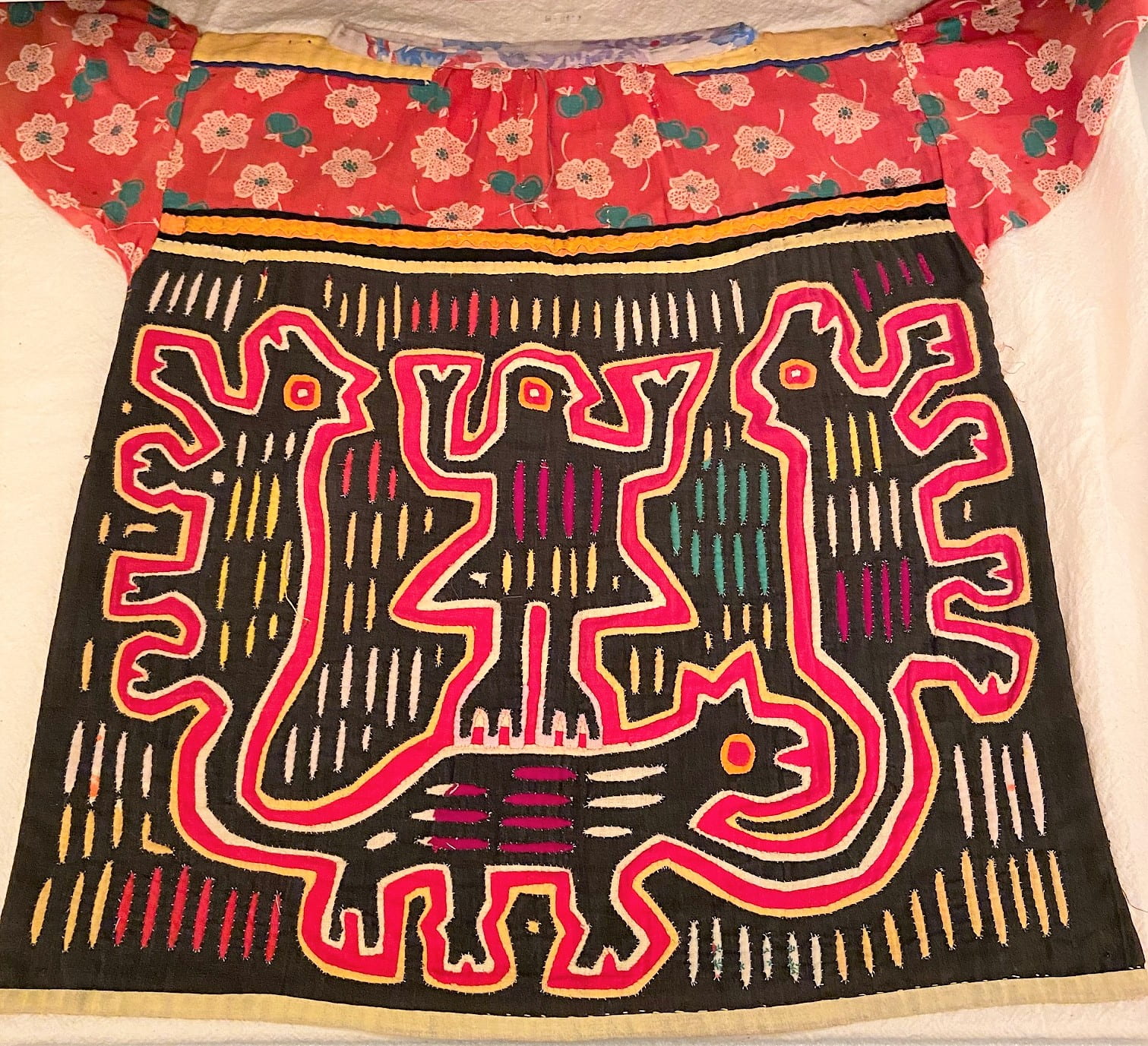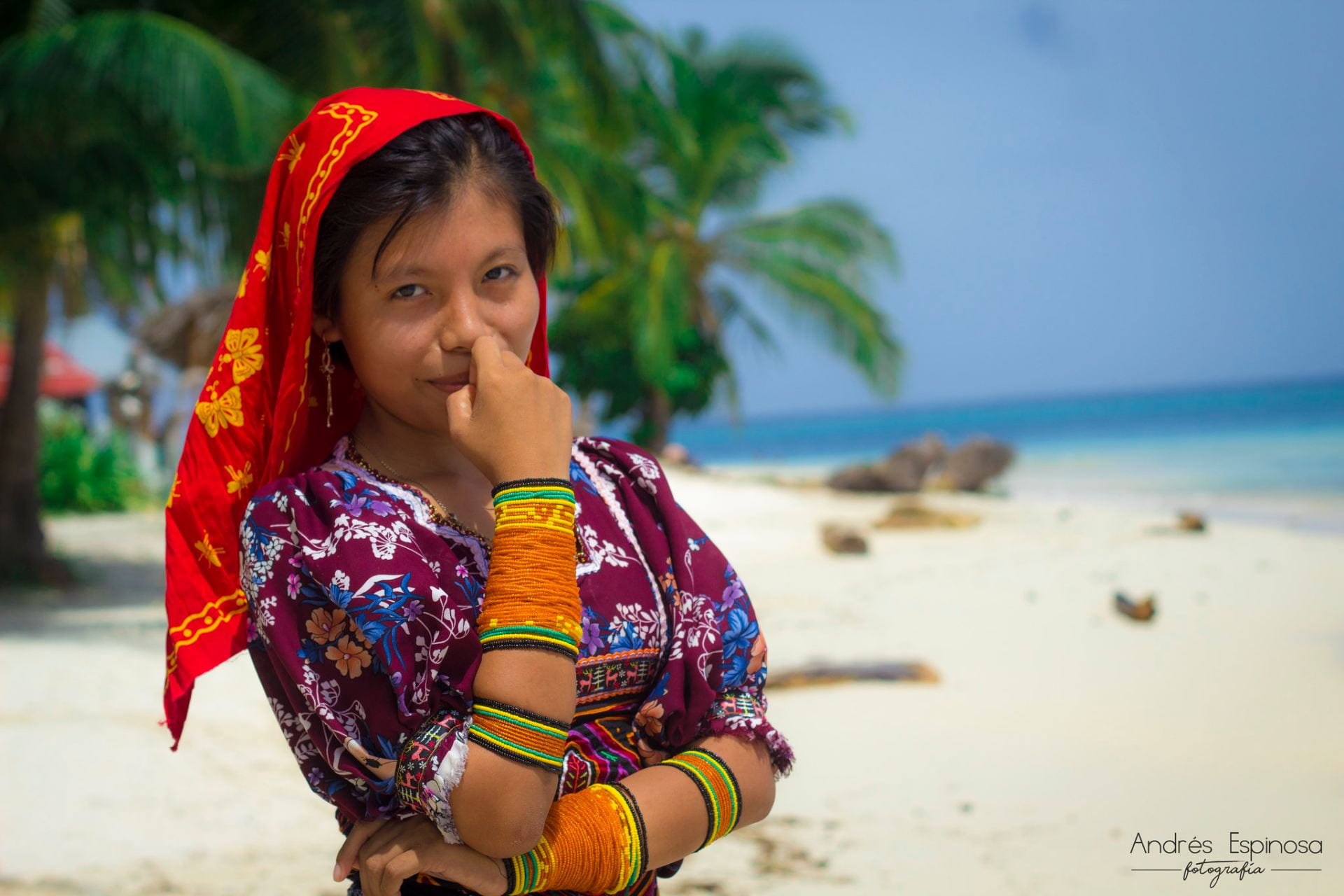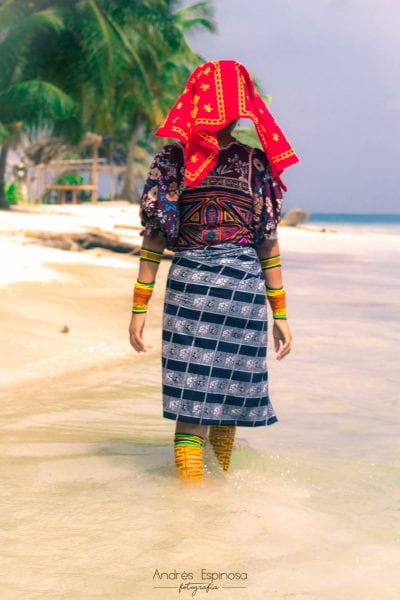Panamanian Mola
Raziel is an international student from Panama. She interviewed a friend of her mother’s about the significance of molas in Panama and how they relate to womanhood. Learn more about why she chose the mola below.
The Making of A Mola
Selected Museum Piece: Mola from Panama.
Object Number: 61-118-3
Why the mola?
I chose the mola because I think it is the perfect representation of womanhood. In Panama, the traditional costumes for women are always more beautiful and complex than men’s clothing. This is because we want women to stand out, to outshine everybody else. We want women to represent our culture because they are the ones who protect our traditions. After all, women represent the most essential role in society: being mothers.
In the Kuna tribe, women are the only ones who can wear the mola and for them, it is a special honor to carry such a tradition. The mola is an amazing craft. I personally admire the talent and dedication of those women and I wanted to share with everyone that admiration. I did not want to just show a picture of it, I wanted people to understand the complexity of its process – hence the video. I also wanted to include my friend’s mother, which is a Kuna woman, because she is a better ambassador than I could ever be for Kuna’s tradition. I wanted her to share her culture. That is why I interviewed her. The pictures are the complete visual representation of the mola.
Woman wearing a mola. Photo credit: Andres Espinosa
Raziel’s thought on womanhood:
My concept of womanhood has been shaped by my family, which is primarily matriarchal. I have grown up surrounded by strong, empowered women and it is almost an inside joke in our family that women are the smarter ones. I have learned from them that although humans are equal, we all have unique characteristics to contribute to society. Women will always have a maternal instinct, a will of giving love and compassion that is also accompanied by strength. Womanhood is about embracing our women’s qualities in order to make this world a better one.
Raziel’s experience with the Womanhood Project:
Being part and collaborating in the Womanhood Project has been an amazing experience. I not only got to share ideas with two other exceptional women but also gained experience with the process of creating an exhibition. We were three different women with no similar backgrounds and somehow, we managed to agree on an idea and bring our experiences to complete that idea. It really showed me that although we are different, we are still humans who are driven by the same emotions and appeals.
Her Bio:
Raziel Hernandez is a candidate for a B.S. in Chemical Engineering at the University of Arkansas. She is originally from Panama and is passionate about art, human communication, and podcasts.
Photo Credit:
The two photos of the woman on the beach wearing a mola are attributed to Raziel’s friend Andres Espinosa, a Panamanian graphic designer and photographer graduated from the University of Panama. He was part of the Photography Committee of the World Youth Day 2019. Aside from photography and illustration, Andres enjoys movies, anime, and sports. He is a national fencing medalist. You can follow his work on his website or @aespinosafoto on Instagram.
Woman wearing a mola. Photo credit: Andres Espinosa


